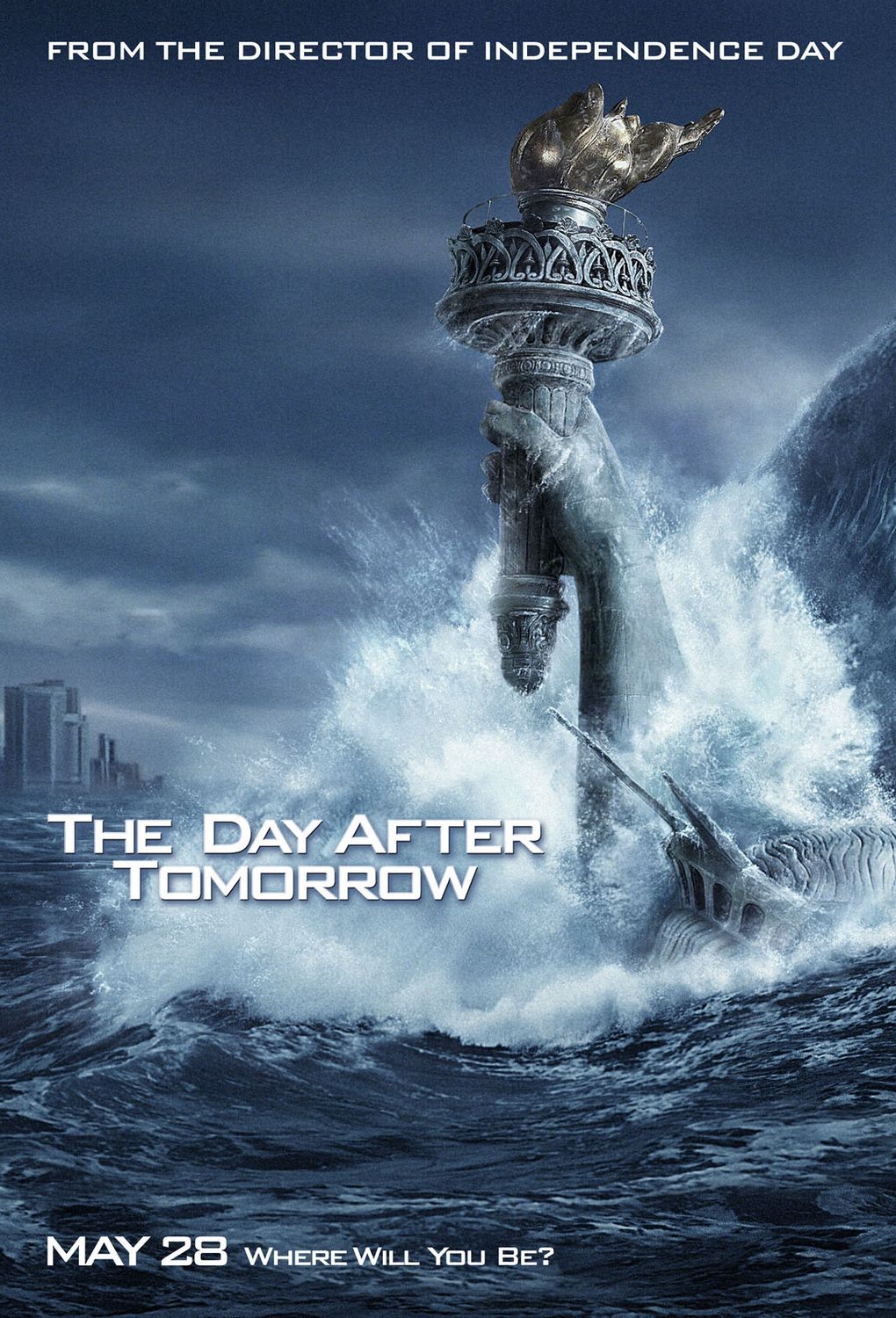 |
| I'm now 0 for 3 when it comes to Roland Emmerich films. I hated INDEPENDENCE DAY (1996) and GODZILLA (1998) and I don't have much good to say about THE DAY AFTER TOMORROW (2004), which I watched the other day. I think Roland Emmerich is the illegitimate love child of Irwin Allen and some Hollywood bimbo as he has continually displayed a fetish for disaster porn in most of his films. THE DAY AFTER TOMORROW use some extremely questionable science to plunge the entire world into another ice age. Tornadoes destroy Los Angeles and three massive polar vertices (where have we heard that term before?) threaten North America, Europe and Russia respectively. It all has something to do with a sudden warming of the North Atlantic current which paleoclimatologist Dennis Quaid tries to warn the world about early in the film. Turns out his predictions were right about the results but wrong about how long it would take to turn the world into a giant deep freeze. Instead of centuries of geologic time, or many years, or several decades, or months, or weeks, or days, everything goes to hell in a hand basket in a matter of hours! Quaid's pleas fall on deaf ears at the White House where a very Dick Cheyneyesque vice president poo-poos Quaid's data and delays the call for an immediate evacuation from the northern United States. Of course, at the end of the film, when half of the planet is covered in ice, the Cheyney clone (who has now become the U.S. President) addresses the world and admits that he was wrong. Take that global warming deniers! I kept thinking that somehow good ol' Dennis Quaid was going to come up with something that would save the day but no, we're all doomed. Instead of saving the world, Quaid sets out to save his son (Jake Gyllenhaal), who has followed his dad's advice and is actually managing to survive (along with a handful of other people) in the frozen wasteland that is now New York City. Nonetheless Quaid dutifully sets out on a rescue mission by walking (!) from Washington D.C to New York City in the worst blizzard ever. We're talking a polar apocalypse but Quaid just keeps plugging away and somehow makes it and manages to find his son (who, along with his buddies, have fought wolves among other dangers) and other survivors in the city. The special effects are extremely well done and convincing but the wide scale destruction of major American cities becomes a bit tedious after awhile. And in typical disaster movie formula, characters are required to do stupid things that put themselves in even greater jeopardy than the circumstances allow. I'll give DAY AFTER TOMORROW props on one thing. Since the film was released ten years ago, we have seen extreme weather events across the world, from droughts, to Super Storm Sandy, to the monster typhoon in the South Pacific to the polar vertices of this past winter. I do believe in global warming. I do believe in climate change. I just don't believe it can happen as fast as it does in this film. |
Monday, March 31, 2014
THE DAY AFTER TOMORROW
Sunday, March 30, 2014
CAPE FEAR
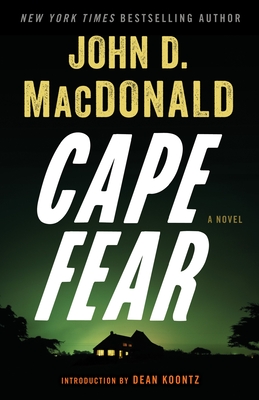 |
| The other day I finished reading (for the second time), John D. MacDonald's novel, CAPE FEAR. Originally published in 1958 as THE EXECUTIONERS, the novel now officially bears the title of the two films that were later made from the material. But there are differences between page and screen and, as is almost always the case, it's the book that is the best. The novel, thanks both to the movies and the talent of John D. MacDonald, ranks as one of his most popular and best-selling stand-alone crime thrillers. The story centers on Sam Bowden, a small town attorney with a wife and three children (two boys and a girl). Years ago, when Bowden was in the army during WWII, he testified against Max Cady in a criminal trial. Bowden was the only eyewitness to Cady's rape of an Australian girl. Cady was sent off to Leavenworth and Bowden returned to civilian life to raise his family and pursue his career. But when Cady is released from prison, he tracks Bowden down and begins to threaten the entire Bowden family. Cady, a stone cold psychopath, is also very smart, clever and cunning. He keeps just this side of the law and is careful not to do anything that will get him arrested again. Bowden is terrified by the threat but he's a man totally devoted to the legal system and is determined to fight Cady with the law. But when Cady poisons the family dog and later shoots the oldest Bowden boy in the arm, the stakes are raised and the threat is escalated. Bowden has run out of legal options and must now take matters into his own hands to protect his family. MacDonald does a great job of slowly but steadily building the suspense throughout the novel. He puts Sam Bowden into a moral box and let's us watch how he gets out of it. Cady is kept largely off of the pages. He has a few scenes here and there but he's relegated to the shadows where he plots his next move in the tense game of cat and mouse. Cady is like the great white shark in JAWS. You know he's out there, lurking just under the surface. You don't know when he'll strike but you know that when he does, it will be brutal and savage. Bowden and his wife, Carol, eventually set a trap for Cady and Bowden does manage to shoot and kill the monster and end the threat to his family. His killing of the man is justified because Cady breaks into the Bowden home and attempts to rape and kill Carol. But it's the law of the jungle that has prevailed, a savage justice far removed from the black and white world of the legal system. The differences between the book and the films are many. The films locate the action to Cape Fear, a coastal community in North Carolina. The book has the action in a land locked, Midwestern setting. The Bowdens have a houseboat upon which the climactic battles take place in both films but in the book, the finale takes place inside the the Bowden home (although they do own a boat that figures in the story). In the films, the Bowden's only have one child, Nancy, their teenage daughter. In both films, she is object of sexual attraction for Cady. Not so in the book as there it's oldest son Jamie who is harmed by Cady. While the films have their respective good and bad points, ultimately we're left with the original source material to judge and evaluate. CAPE FEAR is a wire taut tale of suspense and a psychological study of just how far one man is willing to go to protect himself and his family. MacDonald did a masterful job with this novel. It is a tribute to the man and his skill to say that the book is just as fresh and exciting as it was when it was originally published fifty-six years ago. Highest recommendation. |
THE GOOD, THE BAD AND THE UGLY (MeTV STYLE)
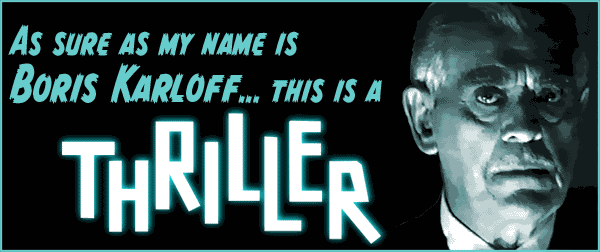 |
| I recently had a chance to watch several episodes of various classic television shows that I had recorded from MeTV (Memorable Entertainment Television). The shows ran the gamut from the good, to the bad, to, well, you know how this goes. First up was a TWILIGHT ZONE episode entitled "Nightmare as a Child". This was a rare TZ episode that I didn't recall ever seeing. It was a good one that I enjoyed even if I did see the twist coming. Next was what I thought was going to be an episode of Rod Serling's every '70s horror anthology series NIGHT GALLERY. At least, that's what the TV listings said and that's what was listed on my menu of recorded programs for my DVR. And sure enough, the opening credits read "Night Gallery" and look, there's good old Rod himself introducing the episode. All well and good, except that it wasn't an episode of NIGHT GALLERY. It was a horribly edited episode of THE SIXTH SENSE, an hour-long series that ran on ABC TV from January 1972 to December 1972. The series starred Gary Collins as a paranormal investigator and I remember watching and enjoying the show. But apparently, for syndication purposes, Universal Studios (which produced both NIGHT GALLERY and SIXTH SENSE), decided to package everything as NIGHT GALLERY, include the Serling introductions and then make a sixty-minute episode fit into a thirty-minute time slot. It's a very poor idea which does a vast disservice to both series. I guess it makes some sense from a financial standpoint but for fans of both shows, it's extremely frustrating. But the bad taste of NIGHT GALLERY/SIXTH SENSE was quickly erased by what I watched next, an episode of the Boris Karloff hosted anthology series THRILLER. The episode was entitled "Guillotine" and with a screenplay by Charles Beaumont (based on a story by Cornell Woolrich) and direction by Ida Lupino, this was a crackerjack exercise in excruciating suspense. No real horror or supernatural elements, just first rate storytelling. I loved it! I finished the night by watching half of an episode of LOST IN SPACE. I turned it off halfway through. I just couldn't take it. I wasn't that big of a fan of the show when I was a kid (I much preferred STAR TREK) but out of a sense of nostalgia, I thought I'd give it a try. It was a wasted effort. The script and characterizations were unbelievably juvenile and the focus of the episode (indeed, the entire series) was on the unholy trio of Dr. Smith (Jonathan Harris), Will Robinson (Billy Mumy) and the Robot along with that week's guest alien. The sets look cheap, the costumes are ugly (there must have been a sale on velour) and Harris's simpering, effeminate characterization of Dr. Smith gets real old mighty fast. I know that there are many devout fans of this series and I'm sure they enjoy watching (and re-watching) the show. But I'm not one of them. |
Wednesday, March 26, 2014
WINDTALKERS
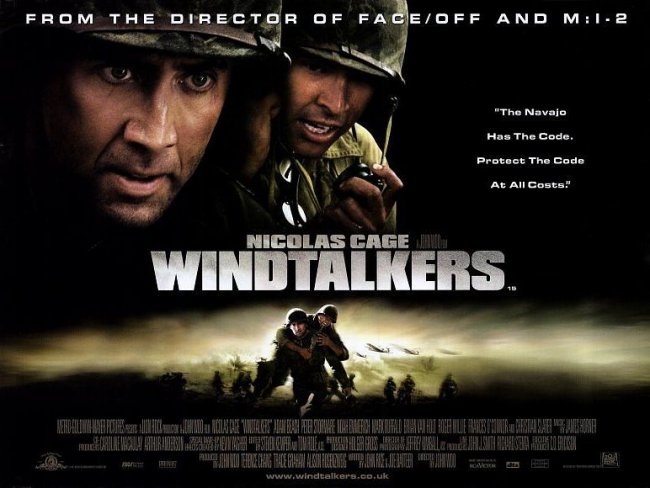 |
| I watched WINDTALKERS (2002) the other day. It's the second film I've enjoyed in the Blu-Ray DVD format. Absolutely stunning picture and sound, so-so movie. I saw this one in the theater when it was first released, mainly because I'm a huge fan of the work of director John Woo. My buddy Kelly Greene and I first got turned on to the Hong Kong cinema action maestro in the late 1980s when several of his films were screened at Hogg Auditorium on the University of Texas campus. The mixture of blood, bullets and balletic action that Woo brought to the screen in such classics as A BETTER TOMORROW (1986), BULLET IN THE HEAD (1990), THE KILLER (1989) and HARD BOILED (1992) were like nothing I'd ever seen in the cinema. It was a bit like being there at the dawn of the Spaghetti Western era as Hong Kong action films burned holes in American movie screens of the late 1980s. Woo's success in his native Hong Kong got him noticed on an international level and it wasn't long before he came to America, seduced by Hollywood, bigger budgets and big name movie stars. But there must have been something in the water (either in HK or the U.S) because John Woo has never made a film in this country that is anywhere near as good as what he produced in Hong Kong. HARD TARGET (1993), BROKEN ARROW (1996), FACE/OFF (1997) and MISSION: IMPOSSIBLE II (2000), were all pale reflections of the overwhelming adrenaline rush contained in Woo's earlier films. WINDTALKERS is a vivid case in point. The screenplay is based on true events from WWII in which Native American Marines used their native Navajo dialect to send and receive messages during combat, messages that the Japanese were unable to break and decode. The men became known as "code-talkers" and in the film, Nicolas Cage and Christian Slater play Marines assigned to protect two code-talkers. At all cost. Which means, if either man is about to be captured by the enemy, he's expendable. Cage and Slater had both worked for Woo before, Cage in FACE/OFF and Slater in BROKEN ARROW and both do solid work here. Cage is front and center as a shell-shocked and partially deaf Marine sergeant who suddenly had the weight of command thrust upon him in an earlier battle and now suffers from PTSD. He heals enough to be sent back into combat where he's assigned to protect (and kill if necessary) Yazee (Adam Beach), a green young Marine and code-talker. Slater has a similar assignment. The action soon moves to the invasion of Saipan and it's here that things start to go a bit wobbly. The Marines storm the beach and head inland across a terrain that is clearly Hawaii but once they're away from the coastal lowlands, the landscape suddenly resembles Southern California rather than a Pacific island. There are some CGI fighter planes thrown in but scenes showing battleships firing their guns are clearly stock footage. Woo orchestrates the action through a pattern of intense combat sequences, then quiet, talkative, character building moments, then more action, then more talk, action, talk, etc. The battle sequences are well staged and Woo keeps his camera in constant, fluid motion, weaving in and out of the intense, at times hand-to-hand combat. And yes, at some point two characters point weapons at each other at point blank range. It wouldn't be a John Woo film without that signature visual flourish. One interesting bit of trivia is the fact that Nicolas Cage and supporting player Mark Ruffalo would both go on to portray Marvel Comics super-heroes in films. Cage was the Ghost Rider in two films while Ruffalo portrayed Bruce Banner/Hulk in THE AVENGERS. WINDTALKERS isn't a bad little film. I've certainly seen worse WWII movies. Woo fares slightly better here than in some of his other American produced films but the work still falls short of his best stuff. Still, watching WINDTALKERS in Blu-Ray was a breathtaking experience and if you want to check this one out, I strongly suggest you go with the Blu-Ray format for maximum enjoyment. |
Friday, March 21, 2014
"ROY'S GONE NOW"
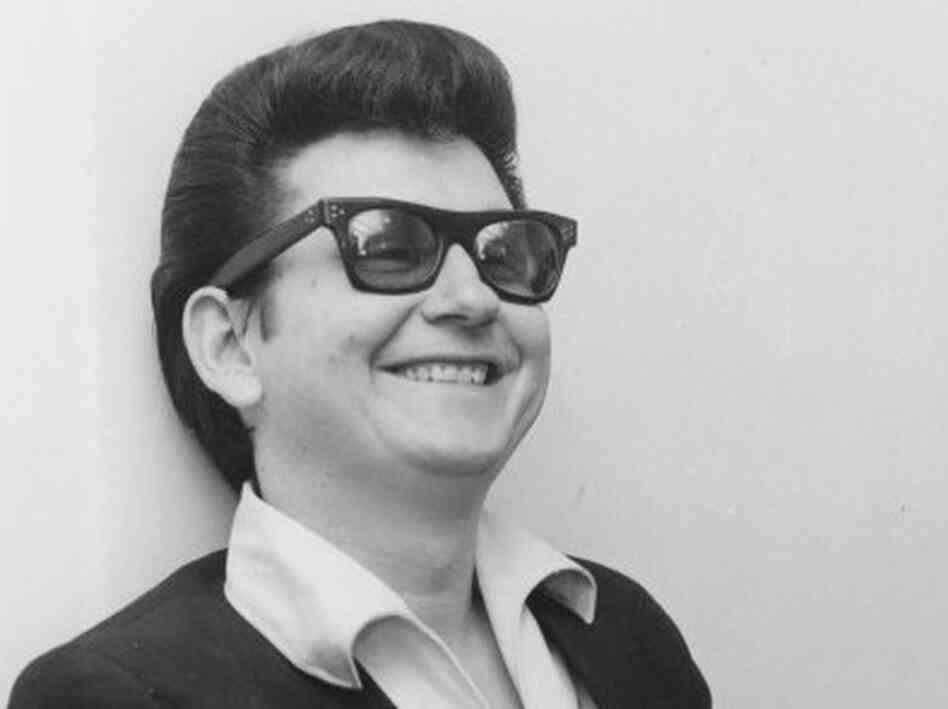 |
| The late, great Roy Orbison (from Wink, Texas) is one of my all-time favorite singer/musicians. In fact, I'd put him in my top five along with Elvis Presley, Marty Robbins, Frank Sinatra and Tony Bennett (whom I saw perform at the Long Center earlier this year). Orbison had a great career in the 1950s and 1960s but then he quit recording for many years. During this time (approximately the late '70s), there used to be late night television commercials offering special deals on Orbison records and tapes (this was before compact discs). The announcer would say, at some point during the spiel, "Roy's gone now." For years, my buddies and I thought this meant that Orbison must have died since we weren't hearing any new songs by him on the radio. But if he had died, wouldn't we have heard about it? But that mellow voiced, late night television pitchman kept insisting that "Roy's gone now." Of course, Roy Orbison was alive and maybe or maybe not well during that time. He made a spectacular comeback in the late 1980s as both a solo artist and as a founding member of the super group The Traveling Wilburys (along with Bob Dylan, Tom Petty and George Harrison). Orbison died in 1988 but he went out in a blaze of glory, his status as a rock and roll icon firmly secured. But my question is, since Orbison was alive when those late night commercials were running, just where did Roy go?To the bathroom? The convenience store? On vacation? Can anyone answer this burning question? |
Sunday, March 16, 2014
"THIS TOWN NEEDS AN ENEMA!"
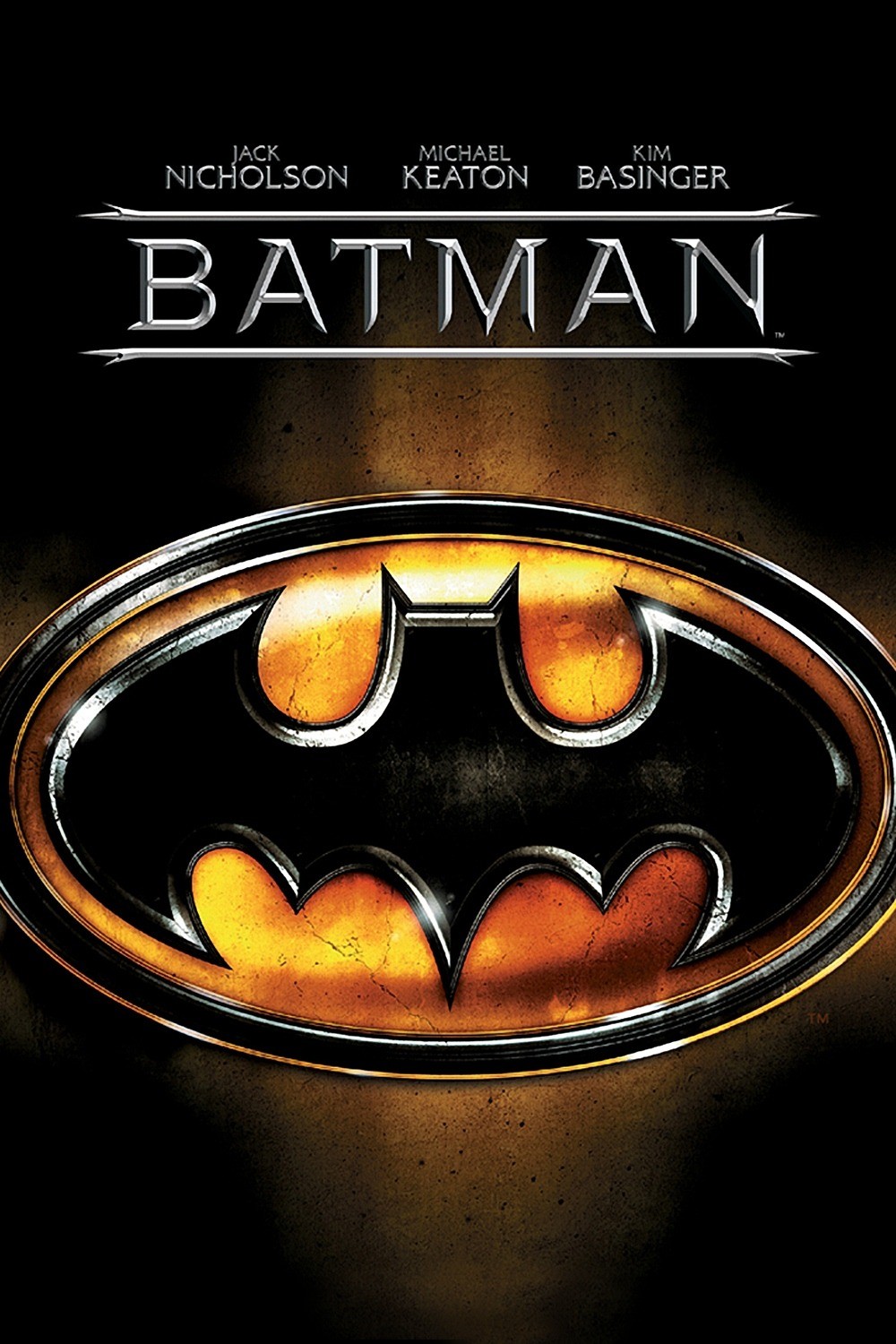 |
| A few weeks ago, I bought a Blu-Ray DVD player as a birthday present for myself. I'd wanted one for a long time but never could justify the expense. I had a perfectly good DVD player that I'd had for years and I have a sizable library of films on DVD. I didn't want to have to replace every film I have on DVD with a Blu-Ray copy (and obsessive/compulsive collector that I am, I sure want to!). But when the sound system on my old DVD player started giving me trouble around the first of the year, I decided to start pricing Blu-Ray players. A brand new Wal-Mart store opened up just across the highway from our subdivision in late February. One Sunday afternoon after it opened, Judy and I went over there to check it out. I found a Samsung Blu-Ray player for $58.00. Sold. While I was in the store, I figured that I needed a Blu-Ray disc to play on my new device. There was huge bin in the store containing Blu-Rays for $7.88 each. I spied BATMAN (1989) on top of the pile and grabbed it. Since I already had the movie on DVD, I figured I sell that version on eBay and replace it with the new Blu-Ray. Done and done. This marks the third version of this film that I've owned since it was released in 1989. I first had a VHS copy, then the DVD and now the Blu-Ray. Ten years from now (or sooner), I'll probably have to upgrade again to whatever format is state-of-the-art at that time. But for now, I have BATMAN on Blu-Ray and it looks spectacular. I well remember all of the buzz and consternation among comic book fandom back in the late '80s when it was announced that there was going to be a big budget, major studio production of BATMAN, a film that was to be directed by Tim Burton and star Jack Nicholson as the Joker and Michael Keaton (shudder! gasp! choke!) as Batman/Bruce Wayne. Burton and Keaton were best known for BEETLEJUICE and most of fandom was convinced that Keaton was totally wrong for the part of the Dark Knight. Turns out they were wrong because then and now I think Keaton did an admirable job in the part. Of course, no one complained about casting Nicholson as the Joker. He was a perfect choice. Still, many had their doubts about the production and we hung on every scrap of information that we could get. Remember, this was in the days before the Internet and complete and total information about any given film in production wasn't just a click away. We got our information in drips and drabs and each new bit of info gleaned served only to stoke our collective anxieties even more. I remember seeing in a magazine (I forget which one) the first stills that were released showing Nicholson in his Joker makeup and Keaton in the Bat-suit. I was suitably impressed by both. I thought they'd nailed the look of both characters. About that same time, I recall attending a matinee of THE ADVENTURES OF BARON MUNCHAUSEN and seeing the trailer for BATMAN for the first time. I was blown away. I thought it looked great! I even went so far as to see THE DREAM TEAM just because it starred Michael Keaton and I was anxious to get another look at him in a film and see what he could bring to the part of Batman. When the film finally opened, I wasn't disappointed. I loved it and saw it in the theater at least twice. When it was released on home video, I bought it and watched it another couple of times and then put it away for years. I hadn't seen the film since sometime in 1990 until I watched it again the other day. There are a number of things to like about this movie but there are a few things I don't care for. The songs by Prince for one thing. I could live without that sonic swill. I think the score by Danny Elfman is a good one, especially during the opening credits sequence (something that appears to have all but disappeared from contemporary films). I thought Keaton did a good job as both Bruce Wayne and Batman but neither character seemed fully fleshed out. In fact, the whole script by Sam Haam and the late Warren Skaaren (an Austinite, by the way) seems in need of one more rewrite. The bat-suit looks great even with the too-long ears and stiff, immobile cowl. The great Jack Palance makes a menacing crime boss, Kim Basinger is lovely as Vicki Vale, Michael Gough is solid as Alfred, Pat Hingle is good as Commissioner Gordon and Billy Dee Williams is mostly wasted in his extremely limited screen time as District Attorney Harvey Dent. But this film belongs to two people: Jack Nicholson and Tim Burton. Nicholson makes one terrific Joker, much better than the one played by Cesar Romero on the old BATMAN television show. Of course, no one could have known in 1989 that we would someday see Heath Ledger in the role, in a radically different (and Oscar winning) interpretation of the character. I think Jack's Joker was and still is great. Director Tim Burton brought a dark, Gothic visual sensibility to BATMAN and it shows in almost every frame. His massive cityscapes look more like Metropolis (Fritz Lang's, not Clark Kent's) than Gotham City and he pays homage to many different films including the Universal horror canon (FRANKENSTEIN and INVISIBLE MAN chiefly), THE WIZARD OF OZ (check out the scene where the Batmobile speeds through a nighttime forest), EYES WITHOUT A FACE (Jerry Hall's scarred visage hidden under a porcelain mask), NIGHT OF THE LIVING DEAD (a zombie like Gothamite attacks Vicki Vale's car in a scene that echoes the cemetery sequence in George Romero's masterpiece) and VERTIGO (the climb to the top of the mile-high bell tower at the films' climax). BATMAN became a box-office smash and a cultural touchstone. It spawned three sequels: BATMAN RETURNS (good), BATMAN FOREVER (bad) and BATMAN AND ROBIN (throw-up-in-your-mouth awful). In the summer of 1989, BATMAN and a new wave of Bat-mania reigned supreme. It's far from a perfect film but at the time, it was groundbreaking in its' serious treatment of the character and his millieu. The best comic book movie ever made? No. The best Batman movie ever made? No. But Tim Burton's BATMAN remains an incredibly important and highly influential film that showed that big screen comic book super-hero movies, when done right, could win both critical acclaim and commercial success. And it looks FANTASTIC on Blu-Ray! |
Saturday, March 15, 2014
THE DEEP BLUE GOOD-BY
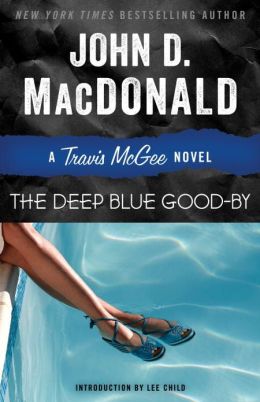 |
| I finished reading (for the second time) THE DEEP BLUE GOOD-BY (1964) yesterday. This is the first of twenty-one Travis McGee novels that John D. MacDonald wrote over the course of his long and illustrious writing career. As stated in my previous post, my first McGee novel (and first MacDonald book) was THE EMPTY COPPER SEA. I eventually read all of the McGee novels but not in strict chronological order. I'm not sure that it's entirely necessary to read them in order and reading them out of order as I did certainly didn't lessen my enjoyment of the books. But if you've never read a Travis McGee novel, it's probably best that you start here. Oh, and whatever you do, try and save the last book in the series, THE LONELY SILVER RAIN, for last. You'll appreciate it much more if you do. DEEP BLUE introduces Travis McGee, self-styled "salvage expert" taking his retirement in chunks while living on a houseboat in Fort Lauderdale, Florida. Most of the elements of the series are established here: the houseboat itself (The Busted Flush) and how McGee acquired it, Miss Agnes (McGee's unique Rolls Royce/pickup truck hybrid), his neighbor, the Alabama Tiger and a bevy of assorted beach girls. McGee is not a private detective. Instead,when he runs short of money, he takes on "salvage" jobs in which he helps victims who have had something of valuable stolen or taken from them by less than legal methods. McGee's terms are that he'll get the item or items back and keep half of the value of said item as payment. In DEEP BLUE McGee is on the hunt for a small fortune in gemstones, illegally obtained by an Army pilot in WWII. The hidden cache of jewels have been found by one Junior Allen, a smiling sadist and one of the best villains ever created by John D. MacDonald. McGee comes to the rescue of Lois Atkinson, a woman victimized by Allen. He nurses her back to life and health over the course of several days using what I have come to refer to as"McGee's magic dick". I don't mean any disrespect for MacDonald and his work but in almost every Travis McGee novel, McGee beds a troubled woman and restores her to vitality after their lovemaking. But that's a minor quibble and it doesn't impede my enjoyment of this and all of the Travis McGee novels. MacDonald spins a great yarn here, slowly building to a nerve-racking battle to the death between McGee and Allen aboard a yacht at sea in the middle of a midnight storm. And while McGee ultimately emerges victorious, he pays a heavy price for winning this battle. In addition to the well-plotted mystery aspects of the book, DEEP BLUE is full of McGee's ruminations on modern life and his likes and dislikes. MacDonald imbued McGee with a very distinctive world view and it's his "voice" (the McGee novels are all in first person) that give this series such a rich and complex texture. If you've never met Travis McGee, you need to do so, immediately. Thanks to Random House for their reissuing of the McGee series and other stand alone novels by MacDonald in handsome new trade paperback editions, you now have the chance to experience the works of one of the greatest post war American authors, mystery or otherwise. Yes, John D. MacDonald is that good. Start here. You won't be disappointed. |
Sunday, March 2, 2014
CYPHER, CYPHER, WHO'S GOT THE CYPHER?
 |
| ARABESQUE (1966) (which I watched the other day), is one of those 1960s spy films that was influenced by both the then concurrent James Bond films and the works of Alfred Hitchcock. It's not as good as any Connery Bond film and it has far too much humor to justly compare to Hitchcock but the elements of each are there. To begin with, the title sequence was designed by Maurice Binder, who did the credit sequences for the Bond films. The swirling, brightly colored geometric patterns and shapes along with the Henry Mancini title track practically scream mid '60s spy fare. Director Stanley Donen had scored box-office gold with his previous film, CHARADE (1963) and much of what worked in that film is put to use again in ARABESQUE. CHARADE had two beautiful leads in Cary Grant and Audrey Hepburn. ARABESQUE gives us Gregory Peck and Sophia Loren. CHARADE was set in Paris, ARABESQUE in London. Both films have scores by Mancini and both films have plots propelled by McGuffins in the form of searches for something valuable that has gone missing (in CHARADE it's money, in ARABESQUE it's information). ARABESQUE opens with a sequence set in an optometrist's office in which every shot looks like it was lifted from the BATMAN television series. Everything is slanted this way and that and we don't get a normally composed and framed shot until after this sequence is over. But even then, Donen doesn't let up with his visual tricks and gimmicks. Throughout the rest of the film, he constantly uses mirrors, lenses, glass tanks, chandeliers, television screens, and other reflecting and refracting surfaces to frame his action either on or through. The story concerns an Oxford don, David Pollock (Peck) who is recruited by the prime minister of a middle eastern country (which is never specified) to infiltrate the organization of an Arab shipping magnate named Beshraavi (Alan Badel) and learn just what he's up to. Beshraavi (who wears dark sunglasses at all times) looks like the love child of Peter Sellers and Roy Orbison. Beshraavi wants Pollock to translate an ancient scrap of hieroglyphics under the belief that it contains important information (important enough to kill for as seen in the cock-eyed opening scene). Pollock finds that the house where Beshraavi lives is really owned by Yasmin Azir (the criminally beautiful Sophia Loren) who may or may not be everything she tells Pollock she is. There are other factions that want the cypher and a mad chase ensues to get and keep the piece of paper, decipher it and figure out what it all means. Of course, Peck and Loren are forced to team up and go on the run together and there are multiple plot twists and turns before they discover the secret of the cypher. Hint: it has something to do with a piece of 1960s high tech called a "micro-dot" and an assassination plot against the aforementioned middle eastern prime minister. Donen keeps thing moving and the plot is engaging enough. The screenplay by Julian Mitchell and Stanley Price is based on the novel THE CYPHER by Gordon Cotler and it insists on giving Peck a series of one-liners that just sound wrong coming from his mouth. Gregory Peck was an extremely accomplished actor but he wasn't good in light comedies. His whole demeanor was just too dignified and drenched in gravitas for him to believably lob one bon mot after another as he does here. The dialogue would have been much better suited to an actor better known for light comedy, such as Cary Grant. But since Grant had starred in CHARADE for Donen a few years previously, Peck (who had starred in another mid-1960s spy film, MIRAGE in 1965) was the choice. He's not terrible (how could he be, he's Gregory Peck!) but ARABESQUE isn't his best work. But who cares about Peck's lame jokes when you've got the stunning Sophia Loren (in clothes by Christian Dior) to look at? ARABESQUE is pure eye candy, a relic of the swinging sixties that's worth seeing at least once. |
Subscribe to:
Posts (Atom)